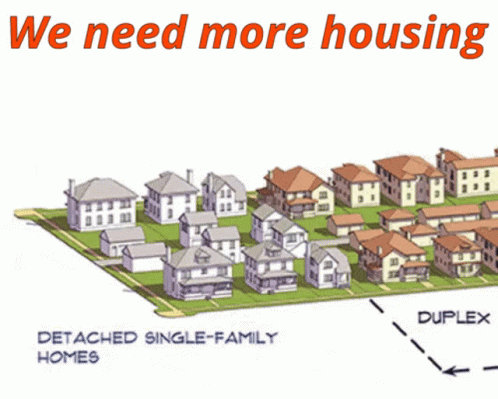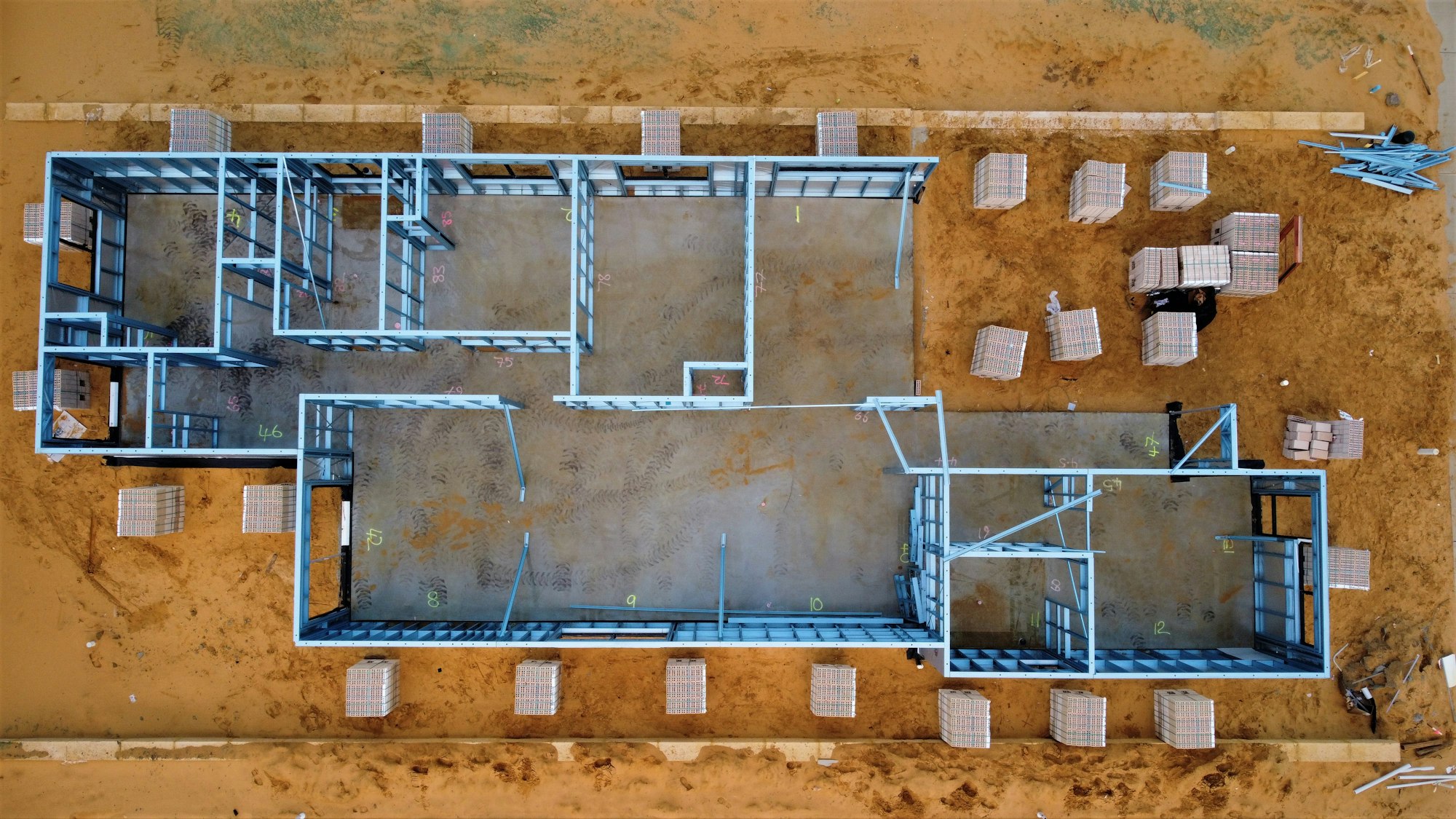You've come to the right place to learn all about residential construction and quality management. Before we forget, if someone forward you this newsletter, don't forget to subscribe to our newsletter so you never miss out!
🤗 Howdy Readers
In this newsletter, you'll find:
After searching high and low, we’ve landed on an Aussie company called Mastt, which we’re now trialling. It’s proving to be an outstanding cost management solution tailored for construction.
If you're a builder working on larger or commercial projects and need better visibility over project costs, risk, scheduling, purchase orders, variations, payment claims/schedules, forecasts, and cashflow—check out Mastt. It’s the most comprehensive and affordable cost management solution we’ve come across to date.
📬️ Post 1 - How Local Manufacturing Can Strengthen Australia's Economy and Housing Affordability
Australia's manufacturing sector has seen a significant decline—from contributing about 25% to the nation's GDP in the 1960s to just over 5% today. This downturn has led to job losses, economic vulnerabilities, and a loss of expertise. At the same time, housing affordability has become a pressing issue, with skyrocketing property prices, stagnant wages, and a limited housing supply making home ownership increasingly out of reach for many Australians.
In this post we look at how rebuilding local manufacturing could address both these challenges. By investing in domestic production, Australia can create jobs, strengthen the economy, and produce affordable housing materials. This approach not only boosts economic resilience but also makes home ownership more attainable for many Australians.
Read how local manufacturing can be the missing link for Australia's economy and housing market, read the full article, click on the banner below.

📬️ Post 2 - What Size Are Full-Size Construction Drawings?
Ever found yourself squinting at a set of building plans, wondering what all those lines and symbols mean? You're not alone. Understanding construction drawings can feel like learning a new language, but it's a crucial step in bringing your dream home to life.
In this article, you'll learn how standard drawing sizes—like A0, A1, and A2—play an important role in the building process. These sizes aren't just made up either; they help ensure that the details of your home are accurately represented and easily communicated among engineers, builders, and trade contractors.

📬️ Post 3 - Why Sustainable Apartments Are the Smart Future of Aussie Living
Thinking about your next home? Sustainable apartments might be what you’ve been waiting for. With rising energy costs and a growing focus on eco-friendly living, these modern dwellings offer more than just a place to live—they promise a smarter, greener lifestyle.
In this post you'll learn how sustainable apartments can reduce your energy bills, enhance comfort, and provide long-term value. We look into the benefits of energy-efficient designs, the importance of sustainable materials, and how these apartments contribute to a healthier environment.

💾 Software of the Week: Diary Report App
(this is not a sponsored post, we are just trialling & testing a boatload of software currently, prior to starting two new projects soon).
If you're in construction and tired of juggling paper logs, scattered photos, and endless emails just to keep track of daily site activity—this one’s for you.
What is it?
Daily Report App is a user-friendly digital tool designed to streamline how construction teams capture and share daily site information. Think of it as your all-in-one site diary: you can log labour, materials, weather, progress photos, and notes—all from your phone or tablet.
Why use it?
Traditional reporting methods can be time-consuming and prone to errors. Daily Report App simplifies this process, ensuring that all essential information is accurately recorded and easily accessible. This not only saves time but also enhances communication among team members and stakeholders.
Features that make life easier:
- Smart checklists with progress tracking: Assign percentage completion to tasks and see how each day's work contributes to overall project goals.
- Clear, professional reports: The app formats your entries into easy-to-read reports, eliminating the need for manual formatting.
- Unlimited users: At $350 USD per year, you can add as many team members as needed without extra costs.
- Comprehensive data capture: Log materials used, labour hours, weather conditions, progress photos, and notes—all in one place.
Who’s it for?
Ideal for builders, site managers, and project leads who want a straightforward, reliable way to document daily site activities without the hassle of paperwork.
Why we like it:
Daily Report App stands out for its affordability and comprehensive feature set. The checklist feature with progress tracking is particularly useful for monitoring project milestones. Its intuitive design ensures that even those less tech-savvy can navigate it with ease. Its one of the best solutions we have come across that wont break the bank.
System requirements:
Compatible with both iOS and Android devices, as well as web browsers, ensuring flexibility across different platforms.
In a market where many reporting tools are either too simplistic or overly complex, Daily Report App strikes the right balance, making site daily reports as easy as they can be! No more $%@%&%@&% or excel or cloud storage images without context.
👉 Learn more about Diary Report app by clicking the link below

ICYMI - the most important construction news from this week
🚀 The latest residential construction news from new sources around Australia for the news week ending 11-07-2025 🔥
News Theme of the Week
"The Grand Illusion"
This week, the housing and construction industry presents a facade of progress—rising home approvals, modular housing initiatives, and policy shifts.
However, beneath this veneer lies a reality where affordability remains elusive, quality control is often sidelined, and systemic issues persist.
The industry's narrative suggests advancement, but the lived experiences of many Australians tell a different story.
It's a grand illusion of progress, where the appearance of change masks the underlying stagnation and challenges.
Music of the week
"The Grand Illusion" by Styx (1977)
Don't be fooled by the radio,
The TV or the magazines,
They'll show you photographs of how your life should be, But they're just someone else's fantasy!
This classic takes a good hard look at how things aren’t always what they seem. It calls out the shiny promise of fame and success—and how that often doesn’t match the reality behind the scenes.
That same mismatch shows up in the housing industry too: we hear big talk about progress, but for many people on the ground, it just doesn’t stack up. The songs lyrics are a good reminder to look a little deeper and not just take things at face value.
Can't see the video embed below? Click here to watch on Youtube.
We've highlighted our favourite news articles for the week by marking with a 🧙♂️ or five (yes, we've now changed to Wizards instead of Tacos - because we all need a little magic to make affordable housing appear!).
05-07-2025
144pc rise: the new home trend changing the way Queenslanders live – [LINK]
2025 Tasmanian Architecture Awards – [LINK]
06-07-2025
10 Tips For Strata Remedial Construction Contracts – [LINK]
Australia’s focus on housing supply isn’t enough to solve this crisis – [LINK]
Our comment: I respect Alan Kohler, but he’s currently in the middle of a book launch and tour. When that’s the case, I find it hard to separate genuine commentary from marketing, regardless of the message.
State of the Housing System report: a long way to go – [LINK]
Our comment: I sure hope while they’re “pulling all levers,” they remember to pull the quality lever too—so it flows with housing supply, not like a trickle in a dry creek.
07-07-2025
No news of interest.
08-07-2025
🧙♂️🧙♂️ ‘Like a prison’: Panned housing plan demonstrates broader trend in Australia’s property market – [LINK]
Our comment: While these developments must meet minimum parking requirements, where do guests park? The overflow spills into surrounding areas, creating more congestion. Density has real knock-on effects for neighbours and the community—it’s a solution with practical consequences.
Home approvals rise, but delays and costs still undermine supply targets – [LINK]
Our comment: We could say current policy is introducing a demand constraint. By doing nothing to materially improve affordability—while also adding stimulus and forecasting rate cuts—housing prices go up. Since wage growth isn’t tracking housing price growth, affordability becomes the constraint. Fewer people can afford homes, demand drops, and the market “balances.” It’s a messed-up policy approach that carries serious social consequences.
🧙♂️🧙♂️🧙♂️ Experts divided: Cost-of-living crisis or housing havoc? – [LINK]
Our comment: This just proves no one can predict the future—88% of respondents got it wrong. A rate cut won’t fix the price of homes. Prices are still sky-high compared to wages. Even three rate cuts won’t bring mortgage payments back under 35% of take-home income. Rate cuts just lower the cost of debt, meaning banks and the government get back less in interest.
Interest rates, especially through the lens of Modern Monetary Theory (MMT), act a lot like a tax—they don’t get called one, but they reduce spending power.
Here’s a quick breakdown:
- The central bank (like the RBA) raises interest rates to slow inflation and lowers them to boost spending.
- Higher rates make borrowing more expensive, which slows down private sector activity and cools the economy.
- It doesn’t collect money like a tax, but it limits your ability to spend—similar effect.
- High interest rates shift income from borrowers (you, small businesses) to lenders (wealthy individuals, banks).
- The government also pays interest on its own debt, so raising rates means more public spending goes to bondholders. That redistributes money upwards—kind of the opposite of a tax.
- Read more about this [HERE].
State building regulator up and running ahead of reforms – [LINK]
New report finds $64 billion in building materials headed to landfill without industry reform – [LINK]
09-07-2025
ABS data reveals ACT facing lowest housing delivery rate in 20 years –
Our comment: Developments are becoming too expensive to build, which lowers overall productivity. It’s not that we’re unproductive—it's that the cost of being productive is too high across the entire supply chain.
🧙♂️🧙♂️🧙♂️ Building boom meets risk reality as insurers eye climate and complexity – [LINK]
Article Excerpt: "Insurers are responding with greater scrutiny. Water damage remains the leading cause of claims, and detailed water management plans – including leak detection systems – are now considered essential to securing favourable terms.
'Water ingress is to Australian construction what wildfire is to Californian property,' one underwriter quipped."
Our comment: Want to know how an industry is really controlled? Follow the insurance. The tail (insurance) wags the dog (construction)—big time.
We need another housing option — between isolation and communes – [LINK]
RBA holds rates steady, surprising markets & delaying mortgage relief – [LINK]
10-07-2025
🧙♂️🧙♂️ Cash rate hold prompts home-building industry to call for action – [LINK]
Article Excerpt: “To truly drive action and get people building again, we need to restore customer confidence in the entire building journey, and that means addressing wider industry challenges – reducing planning and approval delays, increasing investment in infrastructure and land supply, and working to expand the trade workforce to improve build times.”

Our comment: No mention of quality? We published a post back in December 2023 on how builders can help restore confidence—read it [HERE]. We also shared thoughts on bringing back mandatory local authority inspections [HERE].
Builders and their associations keep pushing for “less red tape”—whatever that means. To us, it sounds like: let builders go faster, reduce oversight, skip the process (hello, private certifiers). But here’s the truth: builders can’t be trusted without proper oversight. If the industry could self-regulate, it would have by now. Even with all the reports of defects and poor workmanship, no one’s talking about improving quality—just speeding up the process.

🧙♂️🧙♂️ No land? No problem – airspace building could deliver the next 150,000 homes – [LINK]
Avoiding the vicious affordability cycle – [LINK]
Our comment: These solutions always seem tailored to benefit industry groups, not the end user. The answer is not to redistribute fees via broad-based taxes (read: GST) under another name.
In [THIS POST], we talked about applying the Theory of Constraints and Drum-Buffer-Rope to realign throughput and elevate the actual constraints in the system—rather than the usual “whataboutism” from lobby groups. These groups throw ideas around, but their priority is their members, not the consumer footing the bill.
Who’s speaking for the consumer’s right to affordable housing? All we hear are industry bodies saying: “Don’t change anything, just make it easier for us.” No real solutions—just blame shifting.
👊 Here’s a thought: instead of shouting for deregulation, why not focus on building the world’s best quality, most liveable (best suited for their environment/climate), most affordable homes? He who lives in a glass house should not cast stones.

NAB Australian Housing Market Update: July 2025 – [LINK]
🧙♂️🧙♂️ House prices set to rise, even without a rate cut – [LINK]
Our comment: These policies are designed to stimulate the market—first homebuyer schemes, co-deposit strategies, and changes to super laws forcing people with over $2 million to withdraw funds. And where will that money likely end up? Property.
Add to that ongoing immigration driving demand, and it’s no surprise prices are rising. More people, more policies, same amount of property = higher prices.
The housing crisis is everyone’s problem – [LINK]
11-07-2025
Modular housing expands in Queensland and WA social housing programs – [LINK]
🧙♂️🧙♂️ More social homes underway in Viveash – [LINK]
Our comment: The builder’s construction and safety signage shown in the article’s main image is non-compliant. The warning sign colours are inverted, and the lettering is too small to be legible – see [LINK] or view/read below.
Pages 13, 15, 16, and 17—just to name a few—clearly outline the required colours for danger signs, the minimum text size, and how readable the signs need to be from specific distances.
Yes, people seem to just make this stuff up every day of the week—but there’s actually an Australian Standard that dictates how it’s supposed to be done.
Here’s a question: if manufacturers, distributors, or importers of non-compliant building materials (like products that aren’t CodeMark certified or don’t meet safety standards) can be held liable, then using that same logic—shouldn’t designers or printers of danger or warning signs also be liable for printing signs that don’t comply?
Shouldn’t they know the standards that apply to their own trade?
You might think that’s harsh, but if no one speaks up or pushes back along the way, how else do we end up here—where everything gets quietly buggered up?
No accountability. No enforcement of standards.
No real compliance checks = poor quality work with no one to blame. Just “thoughts and prayers.”
This is just from seeing and image in a news article. Just imaging whats going on in the wild, driving around housing estates with eyes open 🤷♀️
🧙♂️🧙♂️🧙♂️ On three frames of the housing crisis – [LINK]
The Last Word
The headlines from this week paint a picture of a housing industry caught between ambition and reality. Government initiatives promise millions of new homes, yet reports indicate we're falling short by nearly 400,000 dwellings. Despite the influx of funding and evolving policies, tangible outcomes remain elusive for countless Australians yearning for affordable housing—a simple roof over their heads and a place to call home
In these times, it's essential to look beyond the surface, question the narratives, and seek genuine progress. Only by acknowledging the gaps between intention and outcome can we hope to build a bridge through the bullshit.
Can't see the video embed below? Click here to watch on Youtube.
😶🌫️ That's all of today
The best way to support us is to share this this with two (2) friends who you think our content will help in some way.
Feel free to reach out on X or Mastodon or Bluesky - @obiwonky - 👋 Anthony
PS: Quality Management Checklist Access
All our published checklists are available to download via the Checklists Link in the navigation menu or directly at https://www.constructor.net.au/checklists/.
To download, simply enter your email when prompted. This allows us to assign you a free license—nothing more. Once completed, you’ll be able to view and download the checklists.
Each checklist is formatted on A4-sized paper for easy printing. Be aware that the files are larger than typical PDFs, around 25–35 MB each, as they are saved in CMYK (print-ready) format. This ensures the best quality for printing, even if it makes the files a bit “chunkier.”
Enjoy the checklists, we hope they help you identify quality improvements in your new home or next project - or at least, get you thinking.

C12 Fixing Stage recently added to the list
Please note: You’ll need to be a member and to log in to access the content.
Help us improve?
Head over to the Feedback tab in the navigation menu to share your thoughts, view our road map, and up vote feature requests. We want to hear from you—because no one likes the sound of one hand clapping.













